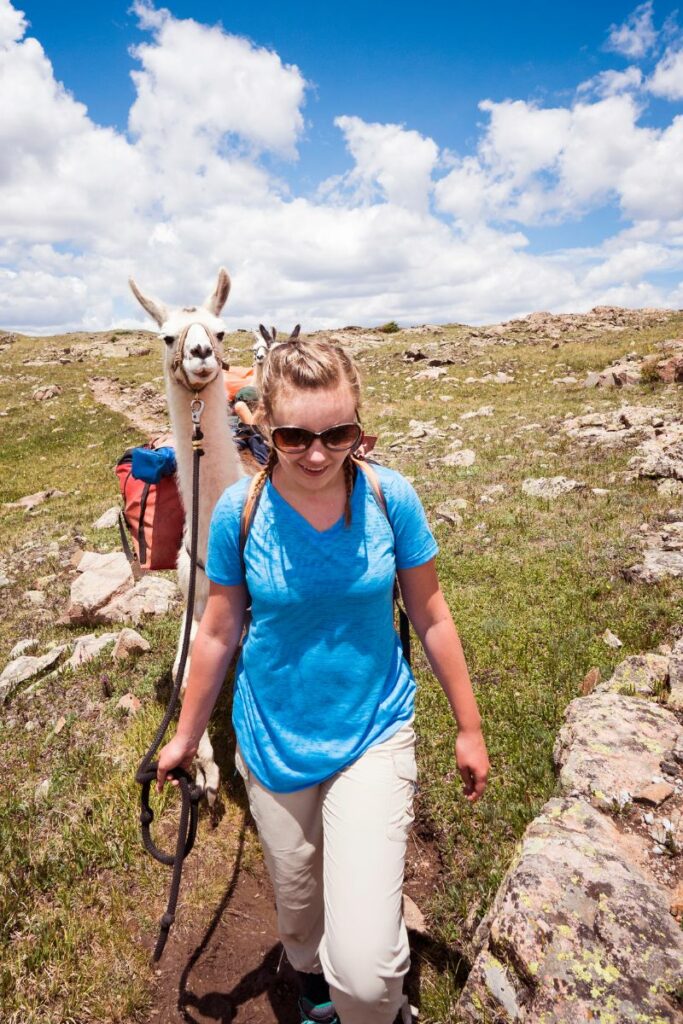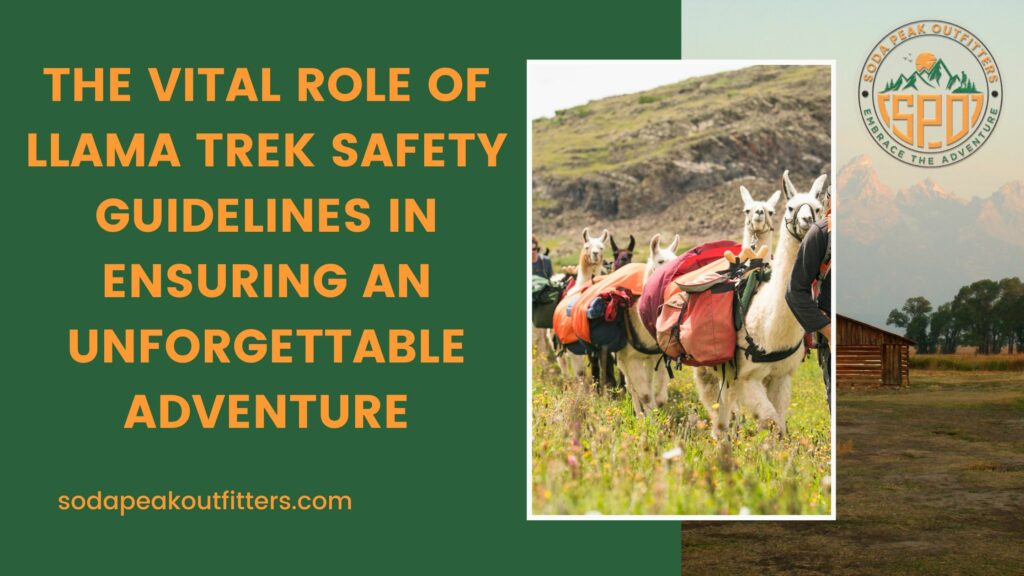Llama treks with Soda Peak Outfitters offer a unique blend of adventure, nature, and the delightful companionship of llamas. As you gear up for an extraordinary journey through picturesque landscapes, it’s essential to recognize the paramount importance of adhering to safety guidelines. These guidelines are meticulously crafted to not only safeguard your well-being but also to preserve the environment and ensure the welfare of our charming llama friends. Let’s delve into the crucial llama trek safety rules that form the backbone of a secure and enjoyable llama trekking experience.
Table of Contents
Listen to Guides: Wisdom in Every Word
Your guides are seasoned experts, well-versed in the intricacies of both the terrain and llama behavior. By actively listening to and diligently following their instructions, you tap into a wealth of knowledge that contributes to a safer and more enriching trekking experience. Their guidance is your compass through the adventure, ensuring you navigate the trails with confidence and awareness.
Appropriate Clothing and Footwear: Dressing for Success
The right attire is your armor against the elements. Wearing appropriate clothing, including sturdy, closed-toe footwear and layered outfits, not only enhances your comfort but also protects you from the ever-changing weather conditions. A well-prepared trekker is better equipped to enjoy the journey, free from discomfort and weather-related challenges.
Llama Interaction Rules: A Dance of Respect
Respecting the llamas is fundamental to the harmony of the trek. Maintain a safe distance to ensure the well-being of these gentle creatures. Avoid sudden movements and loud noises that might startle them, and refrain from feeding them without explicit permission from the guides. By adhering to these rules, you contribute to a positive and stress-free environment for both trekkers and llamas.

Stay on Designated Trails: Treading Lightly
The designated paths and trails outlined by your guides are carefully chosen to minimize environmental impact and ensure everyone’s safety. Straying off these paths can disturb the delicate ecosystem, potentially posing risks to both trekkers and the environment. By staying on the designated trails, you actively participate in the preservation of nature’s beauty for generations to come.
Hydration and Sun Protection: Nurturing Your Well-being
Carry ample water to stay hydrated, especially in higher altitudes where dehydration can occur more rapidly. Sunscreen, hats, and sunglasses are your allies against the sun’s rays. Prioritizing your well-being ensures you remain energized and focused, enhancing the overall enjoyment of the trek.
Physical Fitness: Knowing Your Limits
Before embarking on the trek, honestly assess your physical fitness. Communicate any medical conditions or concerns to the guides. This information allows them to tailor the experience to your capabilities, ensuring a safe and enjoyable journey for everyone.
Group Cohesion: United We Trek
Staying with the group is a fundamental aspect of a safe trek. Avoid wandering off alone, and keep an eye on fellow trekkers to ensure everyone is accounted for. The collective vigilance of the group enhances safety and fosters a sense of camaraderie throughout the adventure.
Litter-Free Environment: Nature’s Custodianship
Maintain a litter-free environment by responsibly disposing of trash in designated bins. Litter not only harms the environment but also endangers wildlife. Being mindful of your waste ensures you leave no trace, preserving the natural beauty of the trekking locations.
Emergency Contact Information: A Lifeline in the Wilderness
In unforeseen circumstances, having accurate emergency contact information is crucial. Providing this information to your guides ensures a swift and efficient response should the need arise. Additionally, carry any necessary personal medications to address health concerns promptly.
Weather Preparedness: Anticipating Nature’s Moods
Nature is unpredictable, and weather conditions can change rapidly. Be prepared for these changes by carrying rain gear and staying informed about the forecast. Your readiness ensures you can adapt to varying weather patterns, maintaining comfort and safety throughout the trek.
Camera and Electronics Safety: Capturing Memories, Safeguarding Devices
Capture the beauty of your trek with your camera, but do so responsibly. Secure cameras and electronic devices to prevent them from falling or getting damaged during the journey. This ensures you preserve your memories while respecting the fragility of the environment.
Leave No Trace: A Pledge to Nature
Abide by the “Leave No Trace” principles, respecting nature by avoiding disturbance to plants, wildlife, and historical sites. Your commitment to leaving no trace ensures the preservation of these spaces for future generations of trekkers.
Conclusion
In conclusion, the adherence to safety guidelines on llama treks is not merely a set of rules; it’s a collective commitment to responsible adventure. By valuing your safety, respecting nature, and embracing the guidance of your experienced trek leaders, you contribute to an unforgettable llama trekking experience for yourself and fellow adventurers. Let the journey unfold with a spirit of exploration, respect, and a deep appreciation for the wonders of the great outdoors.

